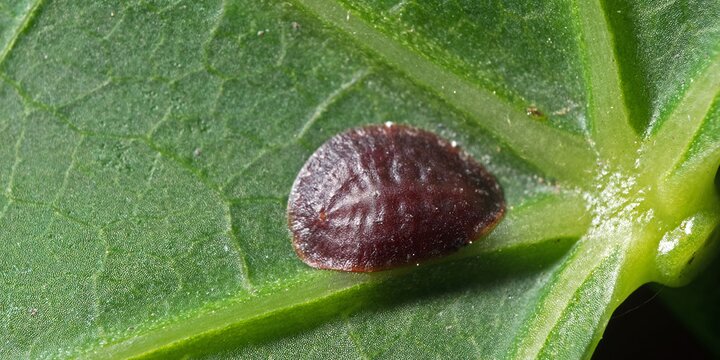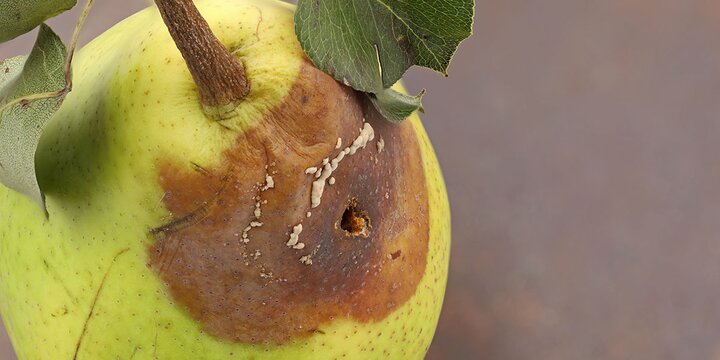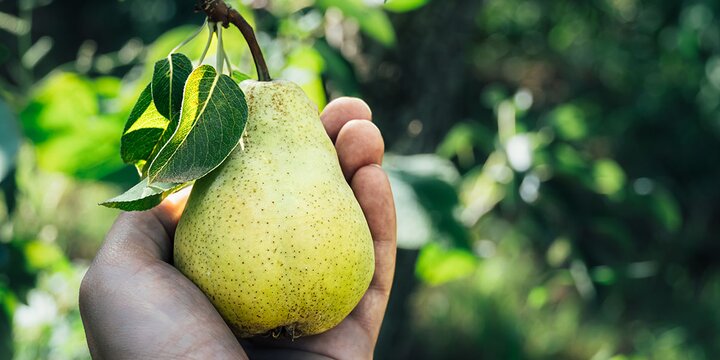Growing Pear Trees
Pears can be grown in Illinois but production is limited somewhat by a bacterial disease called fireblight that also can occur on apples. Pears grown in Illinois and other areas in the Midwest are grafted on quince rootstocks. Some pear trees are grafted on standard domestic Bartlett rootstocks, and some Asian pear varieties grafted on Betulafolia rootstocks are also available from some nurseries. Select varieties that can grow in zone 5.
Plant two or more varieties for cross-pollination. Planting and care are similar to apples, although insect and fungus disease problems may not be as severe on pears as on apples. Pears need to be fertilized with caution as too much new growth can predispose the tree to fire blight. Pears need to be pruned less severely compared to other fruit trees. Pear fruits can be harvested when mature and will continue to ripe in storage.
Suggested varieties include 'Maxine,' 'Starking Delicious,' 'Seckel,' and 'Moonglow.' 'Seckel' and 'Moonglow' will cross-pollinate with each other and the additional varieties listed; 'Maxine' and 'Starking Delicious' don't pollinate each other.
Pruning Pear Trees
The central-leader system is desirable for both standard and dwarf pear trees. The suggestions for training apple trees can also be used for training pear trees.
Wide-angle crotches are desirable but are not as essential for pears as for apples because they have fewer tendencies for crotch splitting and branch breakage under a load of fruits. Two or three branches arising at the same level on the trunk can be tolerated in pears.
Prune pear trees less severely than apples because of the danger of fireblight disease. Heavy pruning stimulates vigorous growth which is more susceptible to fireblight infection.
For dwarf pear trees, select 6 to 12 scaffolds spaced about 4 to 6 inches apart along the trunk, in clusters about 18 inches apart, or a combination of clusters and spaced branches. The lowest scaffold should arise 18 to 24 inches above the ground and the main leader should be 5 to 7 feet tall.
For standard pear trees, select 5 to 12 scaffolds spaced 6 to 12 inches apart vertically along the trunk, in clusters about 24 to 30 inches apart, or in a combi- nation of clusters and spaced branches. The lowest scaffold should be 20 to 26 inches from the ground and the main leader should be 7 to 10 feet tall. A few temporary scaffolds may be left in younger trees to in- crease fruit production. Gradually remove these temporary scaffolds as the main scaffolds develop more bearing wood.
Pruning at planting and during the first 5 years. Select scaffolds but prune as lightly as possible. Pear branches tend to grow straight upward until they start to bear. Then the fruit load usually will spread them out. It usually is not necessary to shorten the scaffolds on young trees.
Pruning bearing pear trees.
Continue scaffold selection if needed. Light annual pruning consisting of shortening and thinning out scaffolds when needed will help keep the trees productive. Standard trees, because of more growth, may need somewhat more pruning than dwarfs, but the growth rate of all bearing pear trees should be kept low to reduce fireblight disease.
Pruning neglected trees.
These trees will have too many branches arising from the trunk. Gradually re- duce the number to 8 to 12 over a 3-year period by cutting them off at the trunk. Thin out and shorten the remaining scaffolds if needed.


